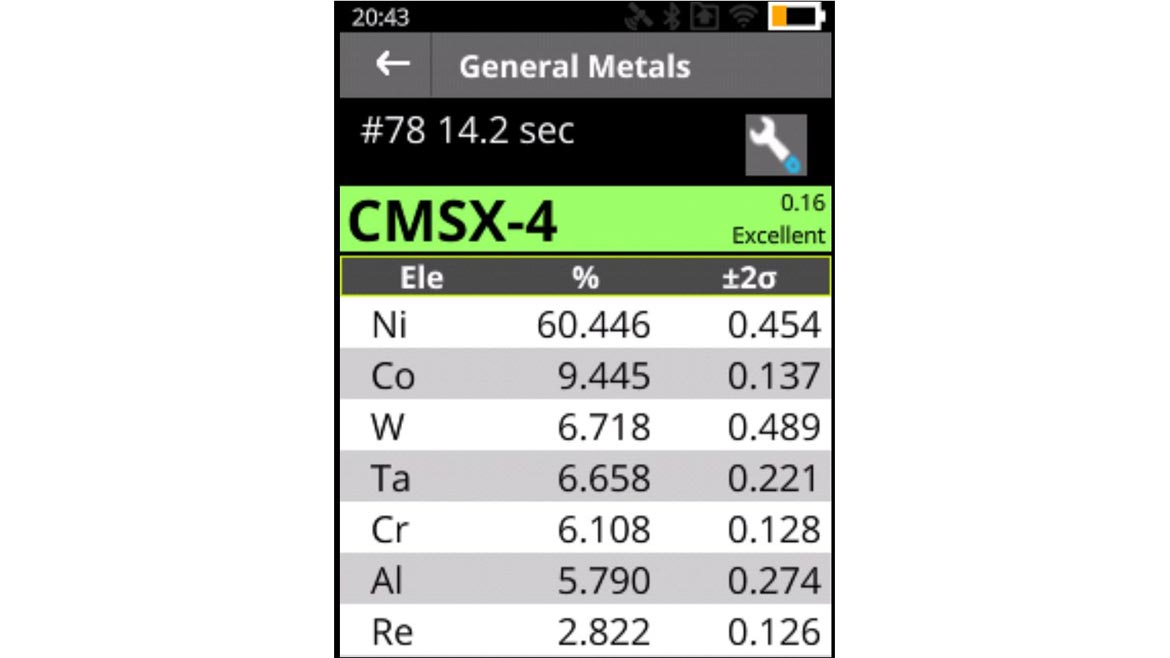NDT | Back 2 Basics
How Handheld XRF Has Revolutionized Metal and Alloy Analysis
Handheld XRF can help manufacturers streamline their quality control processes.

Source: Thermo Fisher Scientific
Quality control is crucial when producing metals and alloys for use in harsh environments, as even small deviations from the intended composition can cause major issues and put lives in danger. Luckily, there is a range of methods that can be used to analyze materials, either in a lab or on site. On-site testing has the great advantage of giving the results quickly, and a popular choice is handheld X-ray fluorescence (HH-XRF). This article describes how HH-XRF can help manufacturers to streamline their quality control processes and ensure materials meet the requirements for demanding applications.
Manufacturing components for the aerospace, automotive, oil and gas, or power generation industries requires use of a large variety of metals – including exotic metals – and alloys, such as stainless steel-, nickel- and cobalt-based superalloys, and copper, aluminum and titanium alloys. These materials must operate under harsh conditions while withstanding a significant amount of mechanical stress. A good example is the blades used in gas turbines, which work continuously at high speed and under extreme temperatures. It is therefore crucial that manufacturers of these components verify that the composition of the materials used meet the necessary specifications. Quality control programs are therefore an integral part of the manufacturing process and, in some cases, involve sending samples to a laboratory for analysis. Unfortunately, this approach is not only destructive, but also very time consuming, as it can take several days to receive the results. These slow turnaround times have led to the development of novel technologies – including HH-XRF – that can be used on-site to deliver immediate answers.
Continuous improvements
Although HH-XRF has been on the market for more than 50 years, large-scale use only became possible after miniaturized tubes replaced radioactive sources. Further improvements were made in the following years, and introduction of the silicon drift detector significantly improved the overall sensitivity of instruments, extending the detection range from atomic numbers 22-83 (titanium to bismuth) down to 12 (magnesium). More recent upgrades – including development of high power tubes and detectors with graphene windows – increased the speed of detection for light elements and made it possible to sense at trace levels. Today’s HH-XRF systems are also capable of identifying alloy grades by comparing the measured compositions with tabulated values in multiple libraries complying with various international standards such as AISI, ASTM, DIN, etc.
Avoiding material mix-up
Incoming and outgoing material verification is an important step in the production of components for these high stress applications and is often conducted at multiple times throughout the manufacturing and assembly processes. HH-XRF can be used to quickly and conveniently measure the composition of various metals and alloys. This includes the identification of exotic alloys, such as CSMX-4 (see Figure 1), and proprietary materials that contain both typical alloying elements – e.g. nickel – and very uncommon elements like rhenium and tantalum, which improve the material’s creep strength and high temperature corrosion resistance.

Figure 1: HH-XRF analysis of CSMX-4, a proprietary superalloy grade used in gas turbines. | Source: Thermo Fisher Scientific
Small differences
In some cases, the composition of two different materials from the same supplier can be very similar, such as rods made of grade 303 and 304 stainless steel. While 304 is the most common grade of stainless steel – exhibiting good corrosion resistance and suitable for multiple industrial and household applications – 303 is preferred for parts such as bushings, bearings, nuts and bolts that require high machinability. 303 has more sulfur compared to 304, which increases its machinability but reduces the material’s corrosion resistance and weldability. It is therefore important that the two grades are not mixed up and the correct material is used for each application, something that can be checked easily using a HH-XRF instrument (see Figure 2).
---303.jpg)
Source: Thermo Fisher Scientific
---304.jpg)
Figure 2 (A & B): HH-XRF analysis of two bars made from grade 303 (left) and 304 (right) stainless steel. | Source: Thermo Fisher Scientific
Recover material traceability
Many refineries, pipelines and power plants were built more than 40 years ago, before it became common to perform material analysis during commissioning. The manufacturers were therefore relying on ‘Material Testing Reports’ provided by steel mills, forwarding them to the end users without any further investigation. Unfortunately, some of the materials were not as durable and resistant to corrosion as the application required, which led to catastrophic incidents that resulted in the release of toxic or hazardous liquids and vapors. In order to avoid such failures, retroactive testing programs like API RP 578 have been implemented. HH-XRF can be used to recover material traceability, giving the operators of oil and gas or power generation facilities a chance to replace components before they malfunction.
Heavy metals regulations
Regulations, such as ‘The Restriction of Hazardous Substances in Electrical and Electronic Equipment’ (ROHS) and the ‘Waste Electrical or Electronic Equipment’ (WEEE), restrict the presence of heavy metals and other hazardous materials in electronics and electrical equipment. Although these regulations originated in Europe, similar legislation has subsequently been adopted in other countries, including Japan, China, Korea and parts of the United States. HH-XRF can help ensure compliance with the regulations and follow the IEC 62321-3-1:2013 or ASTM F2617-15 standards by screening for lead, mercury, cadmium, chromium or bromine. Checking the products in this manner before they reach the shelves preserves the trust between manufacturer and end user, and saves companies from the high costs associated with product recalls.
Summary
It is crucial that the composition of metals and alloys is verified, as deviation from specification could cause a lot of harm, especially when the end product is used in demanding environments. Over the past 20 years, HH-XRF has revolutionized quality control programs in a variety of industries where metals and alloys are critical, bringing laboratory capabilities to warehouses, production lines and industrial facilities. In addition, HH-XRF instruments are easy to use and maintain without an in-depth knowledge of chemistry, and the dependable real-time results enable companies to make fast, informed decisions. Although this field has already seen significant improvements, more innovations are on the horizon: as the hardware is constantly improving, metals and alloys can be identified faster and in lower quantities. Furthermore, there is the potential for HH-XRF data to be processed using artificial intelligence and fed into automated and semi-automated manufacturing processes.
Looking for a reprint of this article?
From high-res PDFs to custom plaques, order your copy today!





